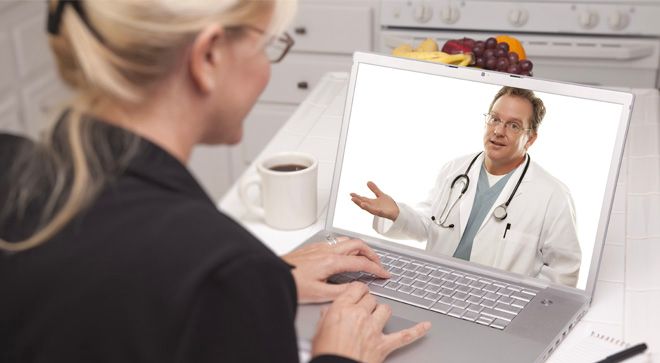Article
Now That Telemedicine is a Mainstay in Cancer Care, One Expert Notes When Patients Should Opt for Virtual Appointments
Author(s):
The COVID-19 pandemic brought on a huge surge in the use of telemedicine for cancer care, but now as the pandemic is slowing down, an expert said that there are certain times when telemedicine will do, while other situations warrant an in-person visit with the doctor.
Prior to the COVID-19 pandemic, telemedicine was rarely used in the cancer space, as the Centers for Medicare and Medicaid Services (CMS) had many restrictions on the practice. However, when states across the United States began to shut down in response to the rapidly spreading coronavirus, CMS began to allow patients to virtually visit their cancer care team, and clinicians were forced to quickly adapt.
Now that several vaccines are available and COVID-19 transmission rates declined, more in-office visits are starting up again, though the practice of telemedicine in cancer care is here to stay.
Prior study results have shown that many patients with cancer deemed telemedicine appointments just as effective as in-office visits.

“What we’ve discovered with telemedicine is that it’s actually a way to be able to reach out to populations that may not have been compliant in coming in to see us for a number of reasons, either because of transportation issues or because they didn’t have access to childcare. It continues to be a way to manage our patients,” said Dr. Robin Zon, president of Michiana Hematology Oncology in Mishawaka, Indiana, in an interview with CURE®’s sister publication, Targeted Oncology.
When to Use Telemedicine vs. In-Person Care
Despite telemedicine claiming a permanent space in the field of cancer, it will not replace in-person visits, Zon explained, noting that telemedicine should be used in addition to face-to-face visits to help manage things like cancer symptoms and chronic disease.
For example, patients who are on a steady dose of a drug for the prevention of a cancer recurrence may be able to alternate face-to-face and telemedicine visits, where clinicians check in on whether patients are still taking their medication and if they are experiencing side effects or difficulties paying for the treatment. Patients with suppressed immune systems may also be better off being seen virtually to prevent risk of infection.
“There may be a situation where we get a phone call from a caregiver that (a) patient is having current symptoms, and we would do a phone triage. Some of those can be handled via telehealth visit, while (in other cases, we’d say) ‘I think (the patient) should come in and see me because I think (they’re) developing sepsis or a ramped infection or have disease progression,’” Zon said.
Additionally, Zon said that hospice and end-of-life care plans should ideally be made in-person, if possible, though that is not always something that can happen.
“Certainly for that initial conversation, patients want to be able to see their doctor when they’re being told this very grim, bad news, but continued management in terms of hospice and end-of-life care doesn’t have to be face-to-face,” Zon said. “We did do it remotely pre-pandemic, and we can continue to do that.”
A Shift in Attitudes Toward Telemedicine
The acceptance of telemedicine for cancer care has grown since its widespread implementation early on in the COVID-19 pandemic — especially for patients who live in rural areas that might be far from their treatment centers.
“(Rural patients) were thrilled that they didn’t have to go to a health care facility to get their visit with their doctor,” Zon said. “My colleagues across the country, as well as my own relationship with my patients (showed) that they were so thankful we had telemedicine, especially early on in the pandemic because they were scared, especially our elderly populations.”
Zon noted that patients also like telemedicine because a virtual visit with the oncology team did not always mean time away from work or family. Also, prior research showed that many patients with cancer deemed telemedicine appointments just as effective as in-office visits.
“Patients have even now requested telehealth now just to go over test results,” Zon said. “So it is not only accepted by providers, but also by patients, too.”
For more news on cancer updates, research and education, don’t forget to subscribe to CURE®’s newsletters here.




